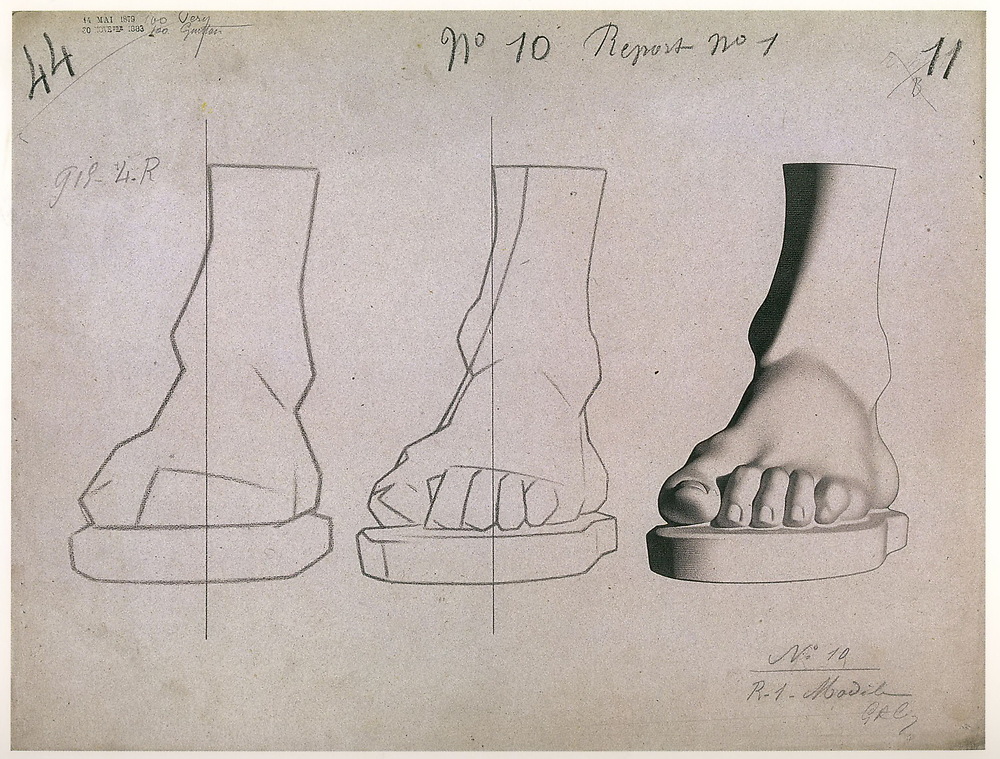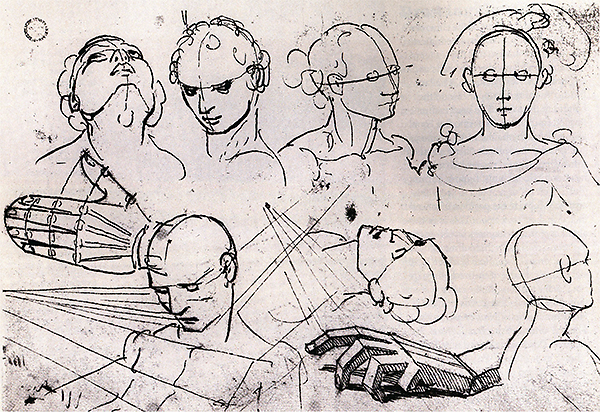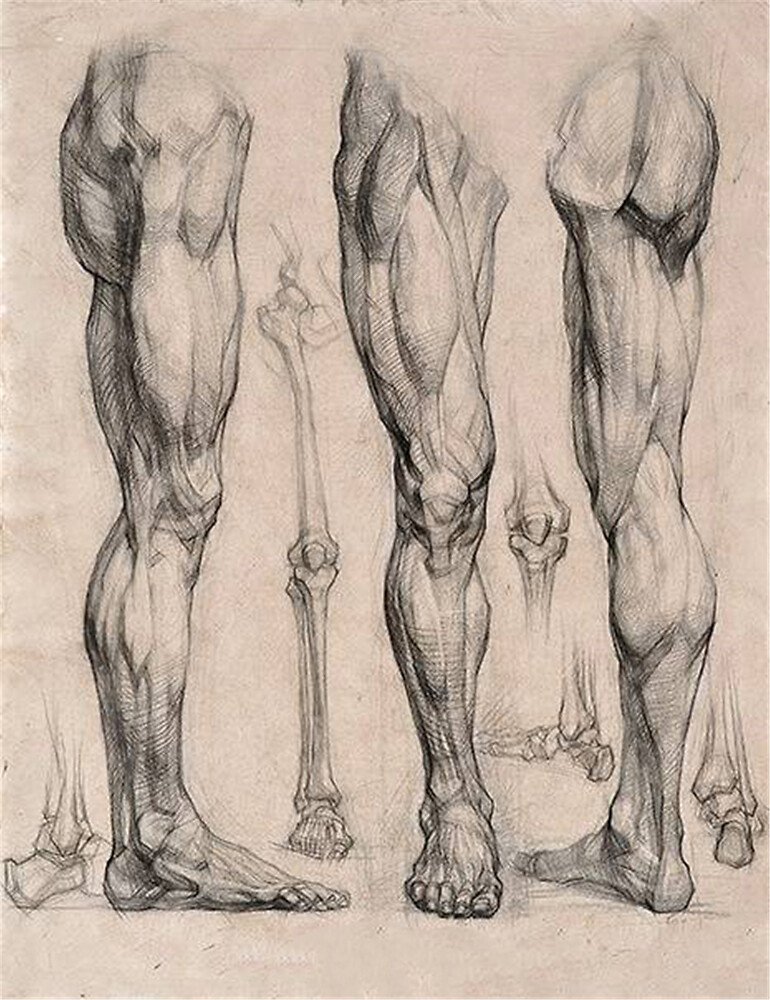Sight-size is a drawing method currently taught at some modern ateliers, where students are expected to reproduce what they perceive with great exactitude.
The method as a few advantages, such as easing comparisons between models and copies, useful for people with underdeveloped vision, but it shows some limitations early on, especially when working from living subjects. On the other hand, comparative measurements and constructed approaches are often much more flexible, but perhaps less suitable for replicating things with perfect accuracy.
As far as copying from the flat is concerned, that is, copying existing drawings, which is and has always been a core element in students education, we suggest to use what we could call a same-size approach, which is basically about using non-sight-size technique with a sight-size-like setting, and which in essence, is very similar to what was used traditionally since the Renaissance.
This article aims at being useful to self-taught students, especially those confused about whether to use sight-size or not.

Plate I 10, Foot of Germanicus
by
Charles Bargue
Sight-size
As the topic is widely covered elsewhere, I’ll rely on two videos by Marc Delassio to introduce sight-size. The first one is rather short and hopefully will make things clear enough; while the second one, longer, explains how to set sight-size for a figure drawing, also applicable for casts, still lifes, etc.:
Some main issues with sight-size include:
- it’s impractical for finished pieces;
- it makes some aspects of the job easier, which will hinder students’ progresses, which, as for grid systems, can be hindered further by the establishment of a comfort zone;
- furthermore, while strictly accurate copy is excellent to teach art, accurate copy often falls short when it comes to create art: unbalanced use of accurate copy encouraged by sight-size can forge bad habits in students.
Comparative measurements
We quickly go over it indirectly when talking about the typical academic block-in: the idea is to compare various distances one can measure in a figure, say, the height of a head compared to the height of a figure.
This provides a much more convenient way of working that sight-size. Some elements, such as plumb lines, horizontal alignments, angle measurements can be used in both approaches to help refine proportions.
Again, the subject is widely covered; if need be, you may want to refer to the following video by Alex Tzavaras which introduces both sight-size and comparative measurements, including a survey of sight-size issues.
Construction
For the sake of completeness, we’ll quickly mention what people mean when talking about construction: the idea is to decompose what one perceive in primitive volumes (eggs, spheres, boxes, cylinders, etc.). This is one way of drawing from imagination. The following exemplifies the use of ovoids/eggs shape for the head, typical of the Renaissance, and shows a planar decomposition of the hand:

Sketches of heads and hands
by
Hans Holbein the Younger (c. 1497 - 1543)
But it can still be used for copying, especially when copying moving subjects, such as the human figure, where anatomical knowledge can help fill the gap. In such cases, the results can be kept rough proportion-wise, but can also be refined using either sight-size or comparative measurements.
Again, the topic has been widely discussed: as far as working from a living model is concerned, one can see how Iliya Mirochnik uses anatomy knowledge to help copy a figure, an emphasis typical of today’s Russian school. As for imagination, despite being in Korean, this demonstration by Kim Jung Gi should be intelligible enough:
Same-size
The main idea behind same-size is to take one measure from the source, say its height, report it to the copy and to never change it, thus guaranteeing that both source and copy will have the same size.
Then, the copy can be performed via comparative measurements, eyeballing, while avoiding reporting direct measures from the model to the copy, and eventually placing the source and the copy side by side.
At the end of the copy, one can use tracing paper to trace the main lines of the source, and thus self-evaluate one’s result by superposing the tracing paper on the copy. This process can also be performed using a camera and image manipulation software (GIMP, Photoshop, etc.)
The process isn’t new at: historical treatises recommended the use of a compass to evaluate proportions, at the end of the exercice, which can now be better performed with our modern, cheap tracing paper. sight-size on the other hand, despite being sometimes advertised as common in the past, seems to be more recent, and to have been introduced by people trying to recover ancient drawing techniques after they have been lost.
In Russia, where a teaching lineage has been maintained for centuries, students don’t use sight-size; they are famous for their “constructed” approach, and their strong emphasis of anatomical features:

Leg anatomy study, from the Glazunov Academy (Академия И.Глазунова) through vk.com ykpx.com – likely, available for fair use
Lala Ragimov reviews multiple 1400s-1700s treatises in this blog post, and, regarding measurement, mentions in the last section:
Many treatises downplay measuring tools and cite the famous Michelangelo saying that the compass should be in the eye and not in the hands. [..] Many English treatises mention the use of a compass to check your finished piece and compare it with the drawing or print you copied, but not to use it in the process of drawing.
Comments
By email, at mathieu.bivert chez: